You are using an out of date browser. It may not display this or other websites correctly.
You should upgrade or use an alternative browser.
You should upgrade or use an alternative browser.
Electric and Hydrogen aeroplanes - feasibility and issues
- Thread starter Grey Havoc
- Start date
1635yankee
Recovering aeronautical engineer
- Joined
- 18 August 2020
- Messages
- 555
- Reaction score
- 766
I think the largest roadblock to hydrogen-fueled aircraft is production and distribution of hydrogen, with storage aboard the aircraft being a distant second, mostly due to the low volumetric heat value of hydrogen. In many ways, hydrogen is a much better fuel for gas turbines than are hydrocarbons, so that's a non-issue.
For electric aircraft, the low (but increasing) energy density of batteries is the major roadblock. Charging facilities is second.
For electric aircraft, the low (but increasing) energy density of batteries is the major roadblock. Charging facilities is second.
Making The Case For Aviation’s Sustainability Options | Aviation Week Network
Boeing’s Cascade model will help inform policymakers on the effects of policies and incentives for sustainability initiatives.
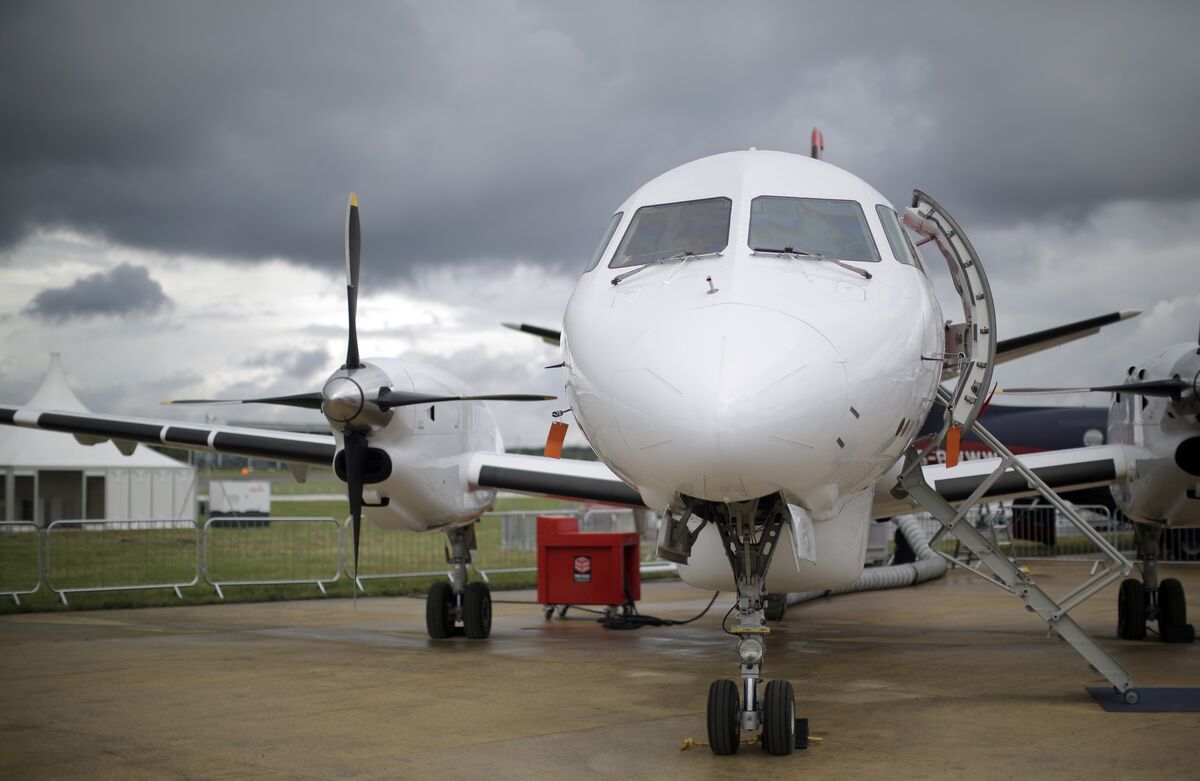
Electric Planes in Australia Seen Halving Costs on Short Flights
Regional Australian airline Rex said operating costs on short flights will drop as much as 50% with the introduction of electric- and hydrogen-powered aircraft in coming years.
MintAir sources electric commuters from Dovetail | Magazine | Business Air News
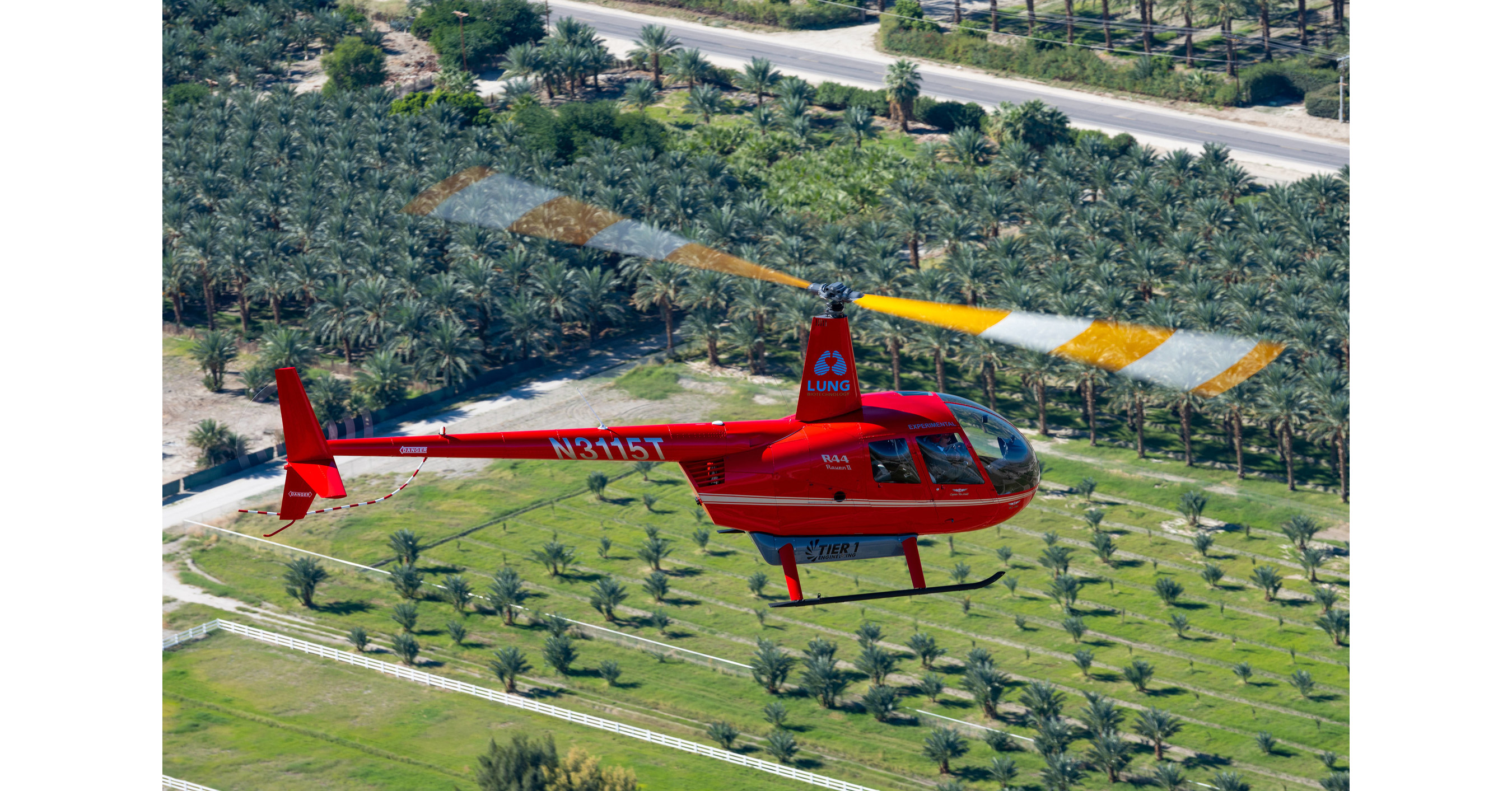
magniX Powers First Point-To-Point Flight of an All-Electric Helicopter
/PRNewswire/ -- magniX, a manufacturer of electric propulsion solutions for aviation, is pleased to have powered the first fully-electric helicopter flight...
Half the price with hydrogen? Did I miss something, why arent all the cars/trucks/busses/trains not using hydrogen allready???
Maybe because LH2 is a dangerous and colossal PITA for any layman driver ?
Last edited by a moderator:
- Joined
- 9 October 2009
- Messages
- 21,979
- Reaction score
- 13,643

Inside Britain’s blueprint for ‘guilt-free’ flying
‘Project Napkin’ sees hydrogen as the answer to zero-emissions flightswww.telegraph.co.uk
“Kerosene [jet fuel] is also extremely dangerous. And hydrogen is no less or more dangerous. It’s just different,” says Jenny Kavanagh, chief strategy officer at Cranfield Aerospace Solutions.
“The flames of the Hindenburg disaster were all about the canopy,” she adds. “The hydrogen was gone before the photographer turned up.”
Kavanagh is among a group of British scientists involved in a government-backed initiative codenamed “Project Napkin”, which has plotted a course to providing Britain with net-zero flights.
The Napkin blueprint, seen by The Telegraph, has been developed by a coalition of industry experts from the likes of Cranfield Aerospace, Rolls-Royce, GKN, and Heathrow airport, as well as academics from University College London and Southampton University.
According to Napkin, hydrogen flights carrying up to 19 passengers between the Scottish islands and the mainland could be a reality between 2025 and 2030. These early flights will be operated by retrofitted planes carrying gaseous hydrogen in tanks beneath their wings.
From 2035, a new fleet of aircraft designed specifically to run on hydrogen could fly the entire domestic schedule from regional airports such as London City, according to the blueprint, which will be unveiled at the UN’s Cop27 climate change conference in Egypt this week.
And by 2040, 90-seater hydrogen-powered jets are scheduled to be in service, meaning the entire UK domestic aviation market will be operated by zero-emissions planes.
The plans pour cold water on electric-powered aircraft playing a central role in “guilt-free flying” - this despite airlines such as easyJet previously identifying electric-powered as the answer to reducing the industry’s carbon footprint.
“Hydrogen aircraft represent a credible solution to reach zero carbon flight and are the natural complement to sustainable aviation fuels,” the blueprint says. “While other solutions were looked at initially, such as electric and hybrid propulsion, the consortium concluded that hydrogen technologies provide the path to zero-carbon emission flight for mainstream commercial services.”
Earlier story:

'Project Napkin': Rolls-Royce and Heathrow partner to supply hydrogen to airports
Government-backed initiative also includes representatives from London City Airportwww.telegraph.co.uk
- Joined
- 9 October 2009
- Messages
- 21,979
- Reaction score
- 13,643
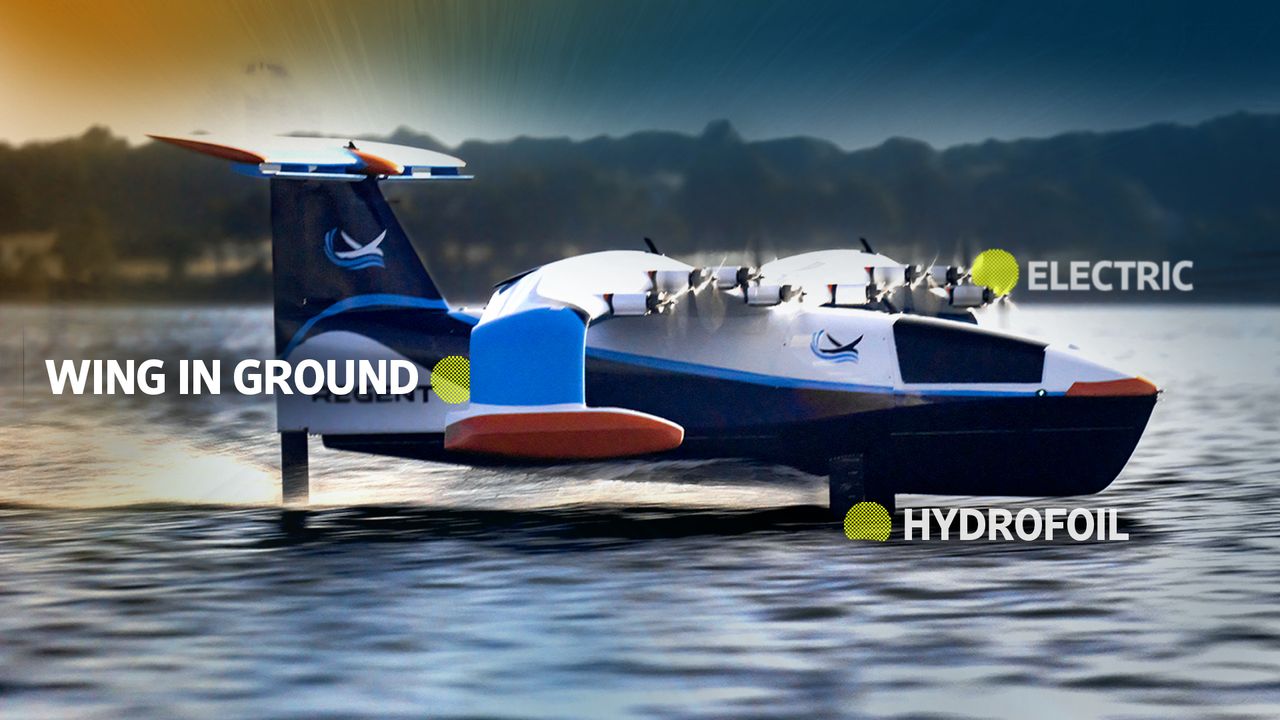
Could Regent’s Seagliders Really Change Coastal Travel?
Seaglider manufacturer Regent hopes to replace coastal short-haul flights and ferries with a zero-emission, affordable new mode of transportation. WSJ’s George Downs breaks down the company’s strategy and the hurdles it may face along the way. Illustration: George Downswww.wsj.com
Charlesferdinand
amateur theologian
- Joined
- 24 October 2013
- Messages
- 172
- Reaction score
- 274
Does using electric motors give them an advantage over the many and varied WIG proposals we have been seeing all these years?
Could Regent’s Seagliders Really Change Coastal Travel?
Seaglider manufacturer Regent hopes to replace coastal short-haul flights and ferries with a zero-emission, affordable new mode of transportation. WSJ’s George Downs breaks down the company’s strategy and the hurdles it may face along the way. Illustration: George Downswww.wsj.com
@Charlesferdinand : Honestly, and I am everything but a Diesel proponent, a Diesel Engine would do better.
In this articel the autor notes, that the Elice Aviation will have a similar range as a land plane, as we may know, this is not fair. Claiming superior range by many start ups will hurt those who try to work with realistic figures.
- Joined
- 9 October 2009
- Messages
- 21,979
- Reaction score
- 13,643
On a tangent that may be of interest:
View: https://www.youtube.com/watch?v=vJjKwSF9gT8
View: https://www.youtube.com/watch?v=_mde6W5H_fs
@Grey Havoc
For internal combustion engines, the LOHC is the most feasible hydrogen storage method. This enables fast refilling, cheap tanks and high energy density (gravimetric and volumetric). LOHC as hydrogen carrier have only one major drawback, they require a lot of heat (250 - 300 °C) to release the hydrogen. The exhaust heat of engines could provide that, but it is difficult (for road vehicles) to match the heat demand and source fast enough. I guess some phase changing materials in combination with hybridization could help.
Generally this cannel if full of little mistakes, I avoid to see it on Youtube...
For internal combustion engines, the LOHC is the most feasible hydrogen storage method. This enables fast refilling, cheap tanks and high energy density (gravimetric and volumetric). LOHC as hydrogen carrier have only one major drawback, they require a lot of heat (250 - 300 °C) to release the hydrogen. The exhaust heat of engines could provide that, but it is difficult (for road vehicles) to match the heat demand and source fast enough. I guess some phase changing materials in combination with hybridization could help.
Generally this cannel if full of little mistakes, I avoid to see it on Youtube...
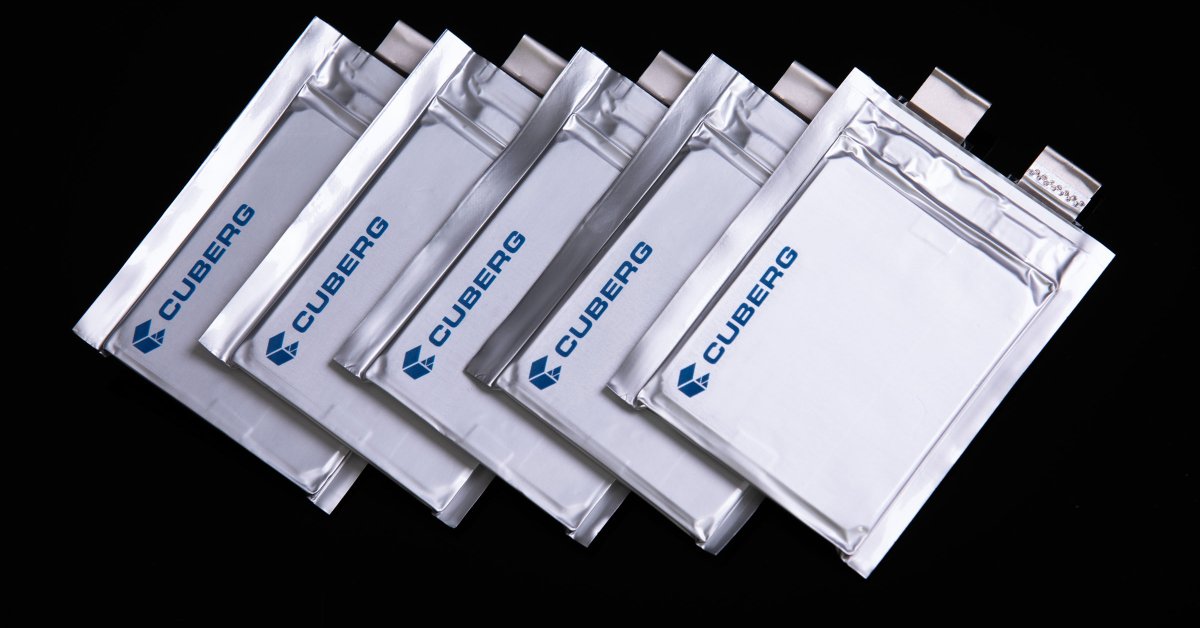
Forget Electric Cars, The Future of Battery Technology is in Airplanes
Developing lighter, more powerful lithium batteries could help make electric airplanes a reality.
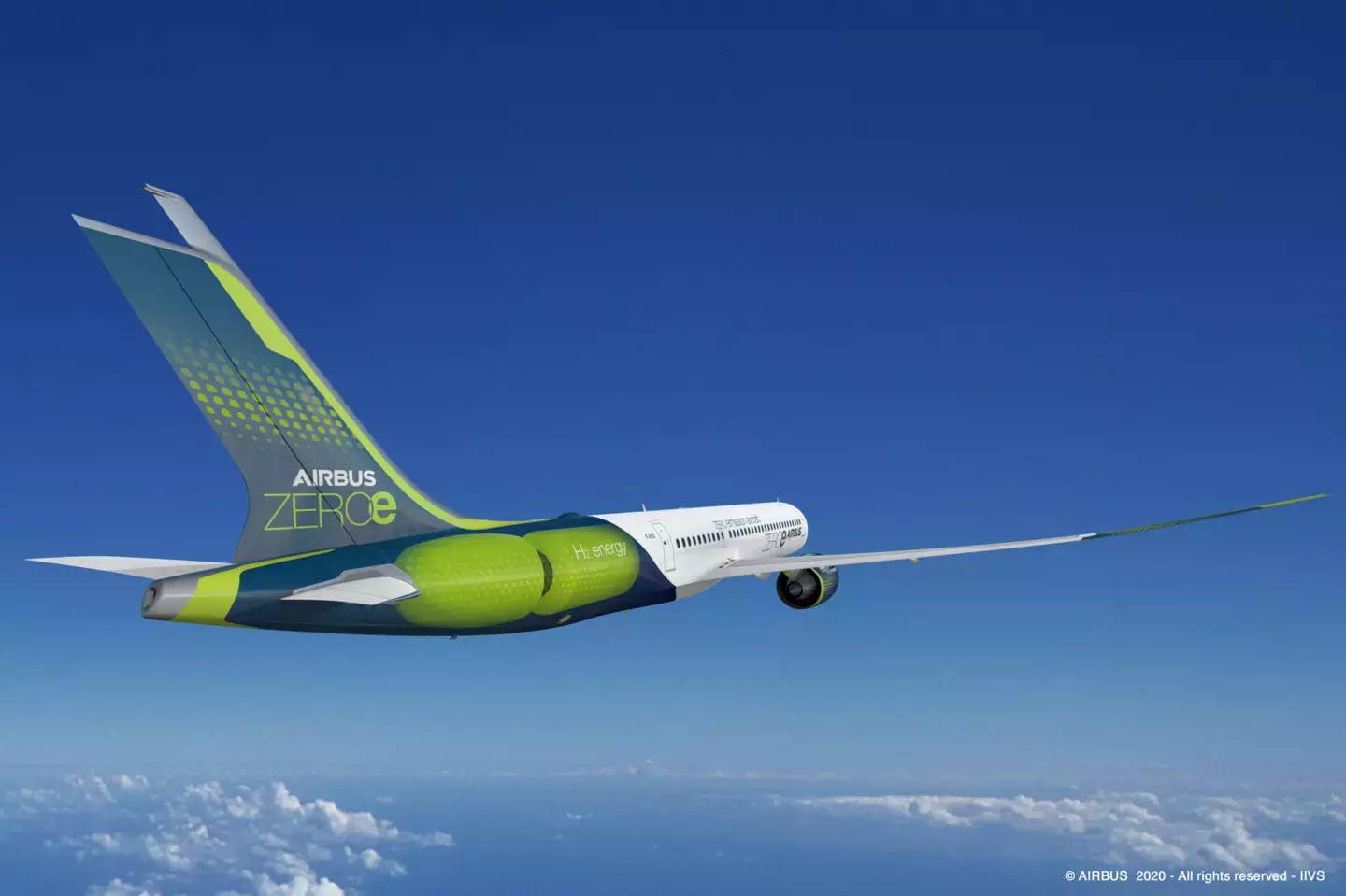
Airbus Developing Innovative Cryogenic Tanks to Make Hydrogen Powered Flight a Reality - Hydrogen Central
Airbus developing innovative cryogenic tanks to make hydrogen powered flight a reality. Hydrogen is key to our mission to bring zero
 hydrogen-central.com
hydrogen-central.com
- Joined
- 9 October 2009
- Messages
- 21,979
- Reaction score
- 13,643
Rolls-Royce tests hydrogen-fueled aircraft engine in aviation world first (ft.com, subscription or registration may be required)
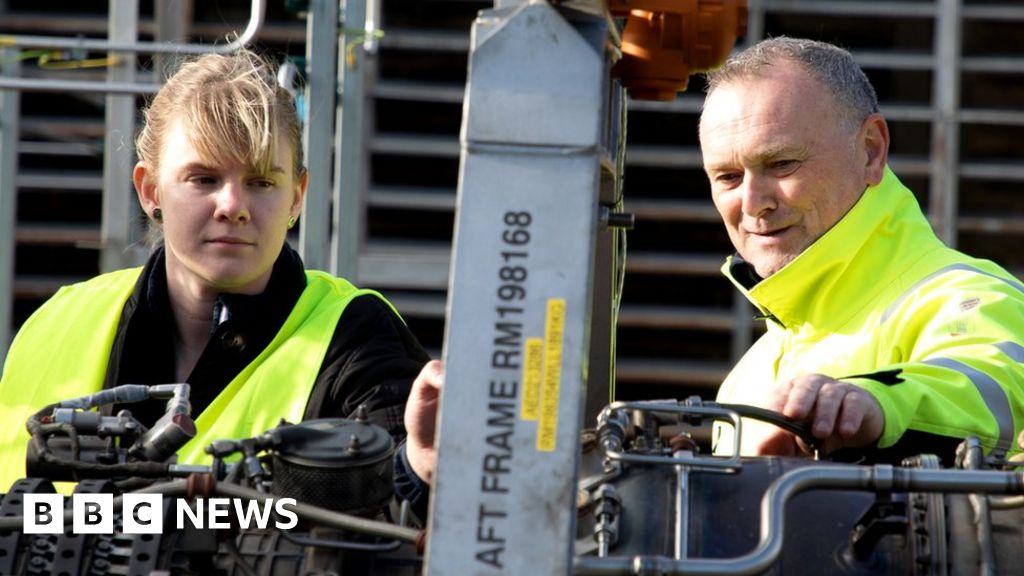
 www.bbc.com
www.bbc.com
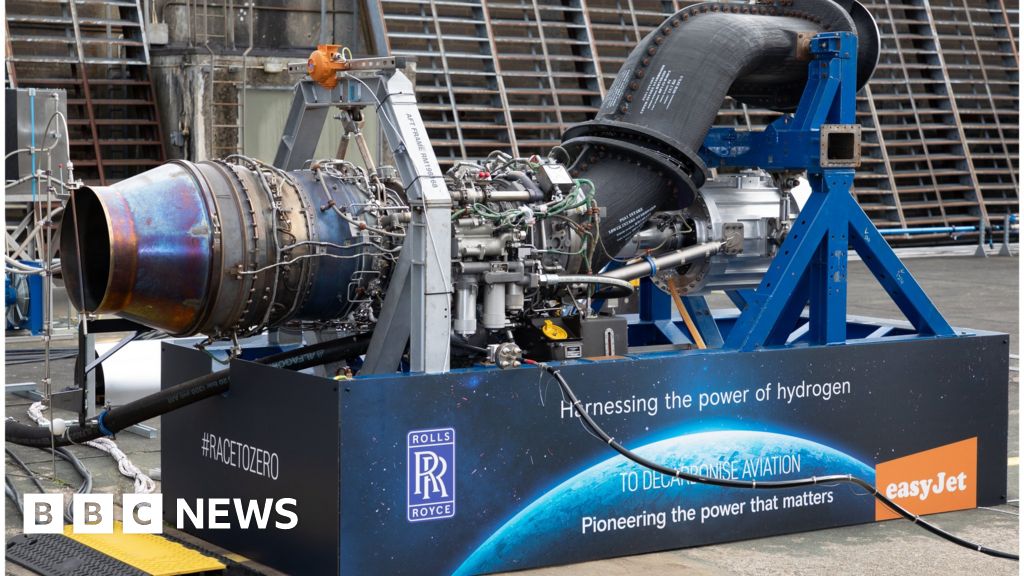
 www.bbc.com
www.bbc.com

 www.telegraph.co.uk
www.telegraph.co.uk
British engineer Rolls-Royce has successfully tested hydrogen instead of conventional jet fuel to power a modern aircraft engine in a world first for the aviation industry, according to the company.
The ground test, which took place at a government test facility at Boscombe Down, used green hydrogen generated by wind and tidal power from the Orkney Islands in Scotland.
Rolls-Royce used a converted AE 2100-A turboprop engine that powers civil and military aircraft to conduct the test in partnership with easyJet.
It marks another step in the industry’s attempts to prove hydrogen could play a viable role to help companies reduce harmful carbon emissions that contribute to climate change.
[snip]
Airbus plans to use a superjumbo A380 to test hydrogen-powered jet engines as part of a plan to bring a zero emissions aircraft into service by 2035.
The Toulouse-based group is working with CFM International, a joint venture between France’s Safran and General Electric of the US, to develop an engine that can run on hydrogen.
The Rolls-Royce led trial, although not involving flying an aircraft, is part of a new hydrogen demonstration programme launched in the summer by the FTSE 100 group in partnership with easyJet after research showed there was market potential for hydrogen-powered aircraft.
The two companies plan to move on to a second set of tests, which will in turn lead up to a full-scale ground trial of a Rolls-Royce Pearl 15 business jet engine.

Rolls-Royce tests a jet engine running on hydrogen
The firm, together with easyJet, is trying out hydrogen instead of jet fuel in a jet engine.

Rolls-Royce tests a jet engine running on hydrogen
Rolls-Royce, together with EasyJet, is trying out hydrogen instead of jet fuel in a jet engine.

Hydrogen used to power passenger plane engine in world first by Rolls-Royce
Successful test marks a milestone in moving global aviation towards greener fuels
Charlesferdinand
amateur theologian
- Joined
- 24 October 2013
- Messages
- 172
- Reaction score
- 274
Stands to reason that Airbus would use an A380 for H2 tests. That airframe is just made to carry hydrogen tanks. They may have to scale down the passenger carrying capacity a bit, though.
- Joined
- 6 September 2006
- Messages
- 4,838
- Reaction score
- 9,476
Is this really a world first? I thought the Tupolev Tu-155 testbed was the first when it used hydrogen for its early trials?
Or is "modern aircraft engine" a get-out clause to allow maximum PR hyperbole?
Or is "modern aircraft engine" a get-out clause to allow maximum PR hyperbole?
Charlesferdinand
amateur theologian
- Joined
- 24 October 2013
- Messages
- 172
- Reaction score
- 274
Well, the Heinkel HeS 1 ran on hydrogen, all the way back in 1937. True, that was a proof of concept prototype, never intended to be mounted in an airframe, but getting a turbine to run on hydrogen is not really a problem. It requires some engineering, of course but carrying the hydrogen is the tricky bit, not burning it.
Hydrogen is actually far better than kerosene for jet engines: energy aplenty. Why it wasn't used is, it is such a colossal PITA as far as tankage is concerned. Temperature, density, brittle, explosivity... wrong, all wrong.
I wonder why additional hydrogen tankage couldn't be added below a classic airliner wings, with some hydrogen pumped into classic kerosene turbofans to get more energy with less CO2... think of huge drop tanks, except they are not dropped.
The Air Launch Sortie Vehicle 747 was to have hydrogen pumped into its classic kerosene engines, and end result would have been, 400% more thrust. Surely enough, the hydrogen tankage ate most of the fuselage - former passenger section. Maybe there is some kind of balance to be obtained, between limited hydrogen in a fuselage tank, plus a pair of hydrogen tanks below wings - this simply added to a classic airliner.
What's wrong with such idea ?
I wonder why additional hydrogen tankage couldn't be added below a classic airliner wings, with some hydrogen pumped into classic kerosene turbofans to get more energy with less CO2... think of huge drop tanks, except they are not dropped.
The Air Launch Sortie Vehicle 747 was to have hydrogen pumped into its classic kerosene engines, and end result would have been, 400% more thrust. Surely enough, the hydrogen tankage ate most of the fuselage - former passenger section. Maybe there is some kind of balance to be obtained, between limited hydrogen in a fuselage tank, plus a pair of hydrogen tanks below wings - this simply added to a classic airliner.
What's wrong with such idea ?
red admiral
ACCESS: Top Secret
- Joined
- 16 September 2006
- Messages
- 1,809
- Reaction score
- 2,389
There's a few papers on it. Main issue is ground strike in crosswinds etc massively limit the size of tank and hence fuel capacity. Pumping into normal tanks would then vaporise the LH2 giving boil off and a bunch of safety issuesI wonder why additional hydrogen tankage couldn't be added below a classic airliner wings, with some hydrogen pumped into classic kerosene turbofans to get more energy with less CO2... think of huge drop tanks, except they are not dropped.
alberchico
I really should change my personal text
- Joined
- 14 January 2014
- Messages
- 708
- Reaction score
- 1,514
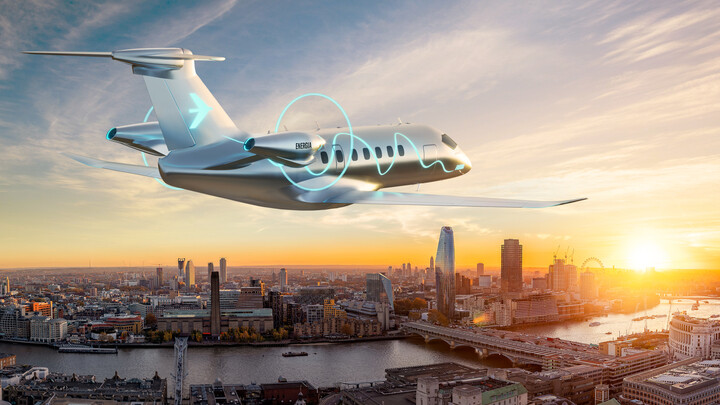
Embraer Narrows Priorities For Energia Green Aircraft Family | AIN
Two Embraer Energia-family airliners—one designed to carry 19 passengers and the other 30—would employ hybrid-electric and hydrogen fuel cell technology.
This is a smart strategy. First start out small by building a hybrid electric 19 seater that would sell well in Brazil as a replacement for the Bandeirante, and once the technology matures you begin scaling it up on larger designs. Out of all the new designs that are out there like the Eviation Alice and the Heart Aerospace ES-30, this is the only company I would bet money on to actually bring their concept pass the finish line and get it into mass production. But then again, even developing a small 19 seater will still require a massive investment, and Embraer right now is actively looking for a partner to share the costs of launching their new regional turboprop airliner which their future is riding on.
alberchico
I really should change my personal text
- Joined
- 14 January 2014
- Messages
- 708
- Reaction score
- 1,514
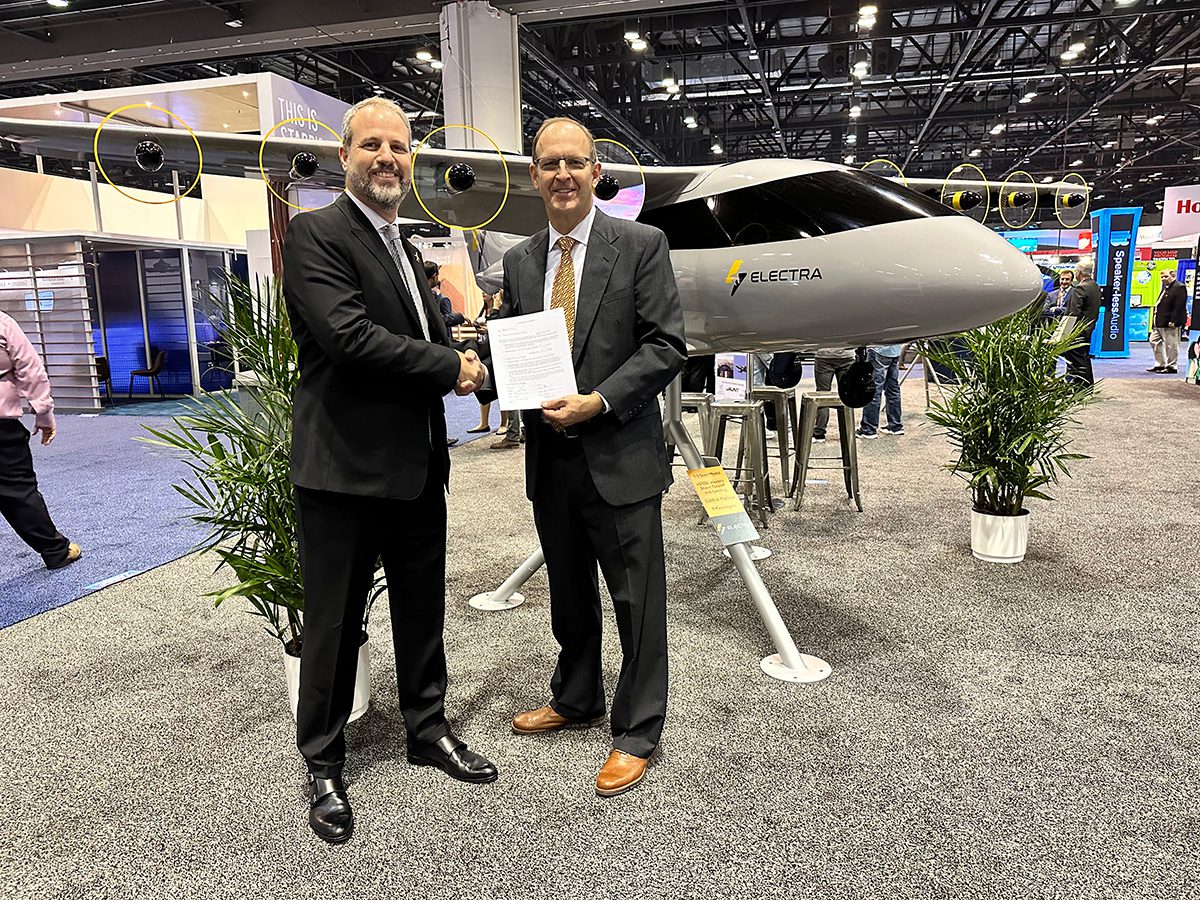
Electra Receives Order for 1,000th eSTOL Aircraft - Avionics International
ORLANDO, Fla. — Electra.aero signed a letter of intent with Welojets for 32 eSTOL (electric short take-off and landing) aircraft. The LOI was signed at the National Business Aviation Association […]
 www.aviationtoday.com
www.aviationtoday.com
"A supplier for the fly-by-wire system has been selected, Ausman shared"
“This is a very conventional aircraft in many ways,” Ausman remarked. “It’s a fixed-wing aircraft with fixed landing gear, very standard in terms of how the fuselage and the cockpit is laid out.”
I'm a bit confused by these statements. I can understand the aircraft having an advanced FADEC system so the pilot doesn't have to manage 8 different throttle levers, but if the airframe has a conventional configuration to minimize risk and make it aerodynamically stable, why have a fly by wire system to begin with ? Just seems that it adds weight and complexity for no good reason. Would it be to help minimize the risk of stalls and departure from controlled flight seeing the types of extreme missions that this aircraft will be flying ?
Last edited:
Safety, comfort, fuel efficiency, design solution (you can make an unstable airframe fly)... There is plenty of good reasons for fly-by-wire.
With fly by wire in place, the plane can then also smoothly transition to autonomous flight (no pilots), something generally requested by the market.
With fly by wire in place, the plane can then also smoothly transition to autonomous flight (no pilots), something generally requested by the market.
alberchico
I really should change my personal text
- Joined
- 14 January 2014
- Messages
- 708
- Reaction score
- 1,514
I hope that this year some news trickles out about this promising project. It has gone radio silent ever since its first flight. It appears that by looking at the registration numbers that there are at least 3 prototypes flying at the moment.

 www.jetphotos.com
www.jetphotos.com
 www.airframer.com
www.airframer.com
View: https://www.youtube.com/watch?v=8I0p7KueMd4&ab_channel=AvionAerospace

Rui xiang RX-4E aviation photos on JetPhotos
JetPhotos.com is the biggest database of aviation photographs with over 6 million screened photos online!
Successful launch of the new energy electric aircraft RX4E | Airframer
alberchico
I really should change my personal text
- Joined
- 14 January 2014
- Messages
- 708
- Reaction score
- 1,514
Dutch Electric Aircraft Startup Maeve Aerospace Receives EU Funding | Aviation Week Network
Maeve Aerospace plans to develop a 44-seat electric regional airliner with a design range of 300 nm.

Delft’s Maeve 01 Dreams Big › Sustainable Skies
The Maeve 01 is the latest big dream from The Netherlands' Delft Technical University - which seems to be a resource-rich aeronautical community producing myriad flying machines. The airplane comes with a novel recharging system, the Maeve ReCharge network – all to provide “Aviation for a...
sustainableskies.org

MAEVE
MAEVE is a leading European innovator in sustainable and economical aircraft design. Founded in 2021, MAEVE operates from offices in Delft, Netherlands, and Oberpfaffenhofen, Germany. MAEVE combines the agility of a passionate team with the expertise needed to manage an industrial aircraft program.
This ambitious all electric aircraft appears to be credible enough to receive a 17.5 million grant from the E.U. I'm surprised they aren't pursuing a hybrid powerplant design, which would give them more flexibility when it comes to having enough range with full IFR reserves. The amount of batteries you would need to power an aircraft of this size will be staggering. For example, the tiny 9 seat Eviation Alice carries almost 8,000 pounds of batteries. This project is at least a decade ahead of its time. Not to mention the cost of designing an aircraft of this size, the cost of getting it certified, as well as creating from scratch all the infrastructure needed to build and support this product. This project will easily require a 1-2 billion dollar investment to make it across the finish line.
For comparison the Cessna Skycourier 19 seat aircraft, which just went into revenue service, is a basic all metal unpressurized airframe, with fixed landing gear and no fancy bells and whistles, and it cost Cessna hundreds of millions of dollars to get it certified.
Last edited:
red admiral
ACCESS: Top Secret
- Joined
- 16 September 2006
- Messages
- 1,809
- Reaction score
- 2,389
That one doesn't look remotely credible unless there's some small print somewhere assuming magic batteries.
Why is it 2+1 cabin layout in a 3.2m diameter fuselage? Are the batteries stacked in the passenger compartment?
Why is it 2+1 cabin layout in a 3.2m diameter fuselage? Are the batteries stacked in the passenger compartment?
- Joined
- 27 May 2008
- Messages
- 1,179
- Reaction score
- 2,485
The article doesn’t contains details of the battery technology, it’s all about how wonderful the electric motors are. Then’s there’s the comments on recharging in 35 minutes. I’m unsure all but a few readers can accurately picture the size of electrical hook up to the battery pack that’s required;- truly mind boggling massive ;- then there’s the power supply and distribution system behind it.
red admiral
ACCESS: Top Secret
- Joined
- 16 September 2006
- Messages
- 1,809
- Reaction score
- 2,389
But if you noticed, the charging is also robotic so I'm sure that sorted itThe article doesn’t contains details of the battery technology, it’s all about how wonderful the electric motors are. Then’s there’s the comments on recharging in 35 minutes. I’m unsure all but a few readers can accurately picture the size of electrical hook up to the battery pack that’s required;- truly mind boggling massive ;- then there’s the power supply and distribution system behind it.
alberchico
I really should change my personal text
- Joined
- 14 January 2014
- Messages
- 708
- Reaction score
- 1,514

Electric planes sound like a fantasy but they may be the future for short-haul in Australia
With net zero technologies for long-haul flights still far in the future, opportunities may lie with smaller operators
It's going to be interesting to see which short haul aircraft project actually makes it into service. This hybrid conversion project also looks promising.

Monte Inks Deal For Up to 50 Ampaire Hybrid-Electric Aircraft
Hybrid-electric aviation company Ampaire announced that the financing company, Monte, is ordering up to 50 Eco Caravans.
View: https://twitter.com/AmpaireInc/status/1593750819207147520
martinbayer
ACCESS: Top Secret
- Joined
- 6 January 2009
- Messages
- 3,398
- Reaction score
- 3,908
Oh really? See https://www.energy.gov/eere/fuelcells/safe-use-hydrogen. Quote: "A number of hydrogen's properties make it safer to handle and use than the fuels commonly used today." You were saying?Half the price with hydrogen? Did I miss something, why arent all the cars/trucks/busses/trains not using hydrogen allready???
Maybe because LH2 is a dangerous and colossal PITA for any layman driver ?
Last edited:
- Joined
- 27 May 2008
- Messages
- 1,179
- Reaction score
- 2,485
Oh really? See https://www.energy.gov/eere/fuelcells/safe-use-hydrogen. Quote: "A number of hydrogen's properties make it safer to handle and use than the fuels commonly used today." You were saying?
That’s like claiming a shark only has a 1%chance of biting you because its teeth only make up 1% of its body weight.
A potted history of mankind’s current safety record for handling hydrogen compared to kerosene can be found here;- http://www.factsonline.nl/home/aboutfacts
and it’s not pretty;- Hydrogen is two orders of magnitude worse than kerosene.
Hydrogen’s only aim in life is to leak, find an ignition source and burn with a near sonic deflagration.
Last edited:
martinbayer
ACCESS: Top Secret
- Joined
- 6 January 2009
- Messages
- 3,398
- Reaction score
- 3,908
Well, call me ornery, cantankerous, and old fashioned, but I still trust a US Government tax payer funded information source more than some random FACTS (in all caps, I might point out) labelled website of let's just graciously say at least dubious and murky provenance and financing...Oh really? See https://www.energy.gov/eere/fuelcells/safe-use-hydrogen. Quote: "A number of hydrogen's properties make it safer to handle and use than the fuels commonly used today." You were saying?
That’s like claiming a shark only has a 1%chance of biting you because its teeth only make up 1% of its body weight.
A potted history of mankind’s current safety record for handling hydrogen compared to kerosene can be found here;- http://www.factsonline.nl/home/aboutfacts
and it’s not pretty;- Hydrogen is two orders of magnitude worse than kerosene. Hydrogen’s only aim in life is to leak, find an ignition source and burn with a near sonic deflagration.
Last edited:
- Joined
- 27 May 2008
- Messages
- 1,179
- Reaction score
- 2,485
Well, call me ornery, cantankerous, and old fashioned, but I still trust a US Government tax payer funded information source more than some random FACTS (in all caps, I might point out) labelled website of let's just graciously say at least dubious and murky provenance and financing...That’s like claiming a shark only has a 1%chance of biting you because its teeth only make up 1% of its body weight.
A potted history of mankind’s current safety record for handling hydrogen compared to kerosene can be found here;- http://www.factsonline.nl/home/aboutfacts
and it’s not pretty;- Hydrogen is two orders of magnitude worse than kerosene. Hydrogen’s only aim in life is to leak, find an ignition source and burn with a near sonic deflagration.
[/QUOTE]
I was referring to your edited rosy spin on the US gov information source as he very same document includes hydrogens exceptionally wide flammability range (4 to 74% when mixed in air) and minimum ignition energy (0.019 mJ- below that of a visible spark).
As for the chemical safety database of 25,000 accidents,” Those who deny history are doomed to repeat it”
Last edited:
Similar threads
-
Sikorsky Long-Range Hybrid-Electric VTOL Demonstrator (HEX)
- Started by VTOLicious
- Replies: 5
-
-
-
-
